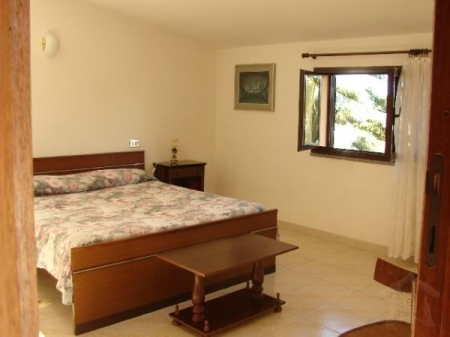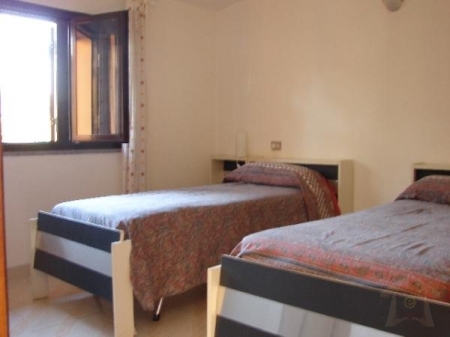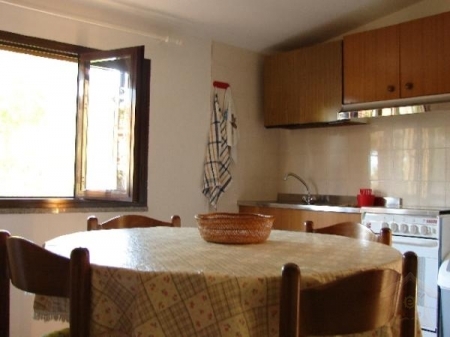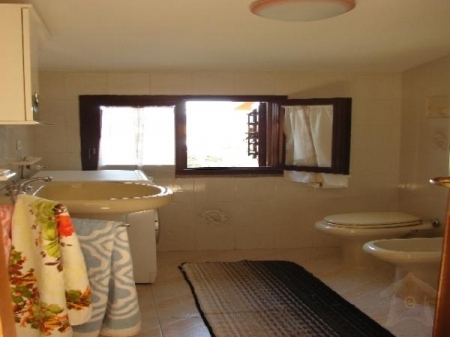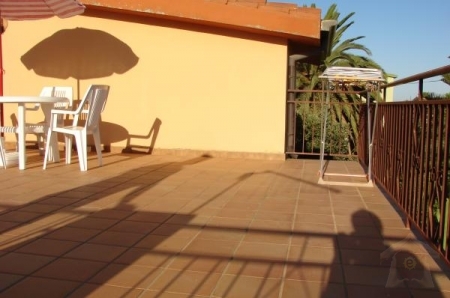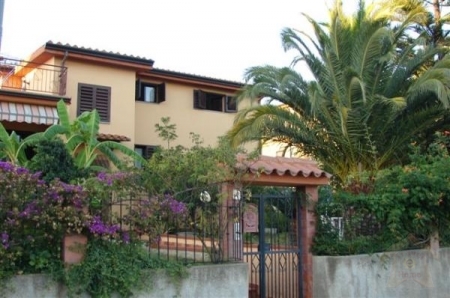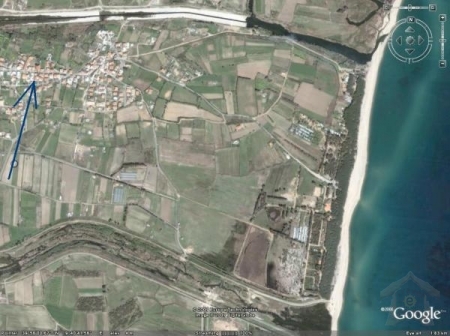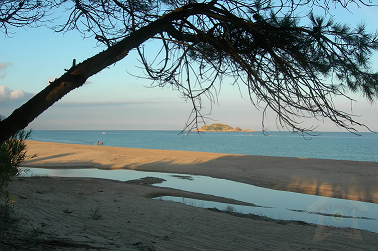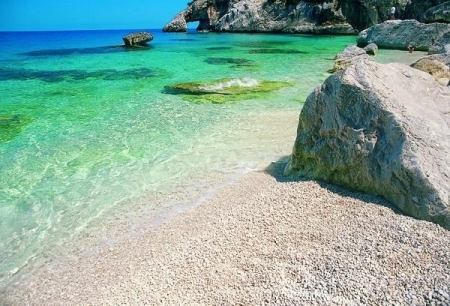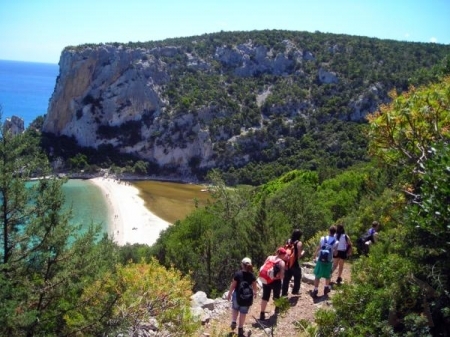Itineraries in Santa Maria Navarrese and Lotzorai.
The area is a splendid combination of sea and mountains, with its 40 km of limestone cliffs and ramparts, from Santa Maria Navarrese to Cala Luna, interrupted by little sandy bays, with famous places such as the monolith of Pedra Longa, Capo Montesanto, Portu Quau, Cala Biriola, Cala Goloritzè, Cala Mariolu, Cala Sisine and Cala Luna; the Golgo basalt plateau with Su Sterru, Europe\'s deepest sinkhole; and the Margine karst plateau. . The local fauna includes important species such as the Golden Eagle, Eleonora\'s falcon, Audouin\'s gull, mouflon, and wild boar... There are many cave systems inland from the coast, extending both above and below sea level. There are archaeological remains from all periods: anthropozoic relics from the prenuragic period, nuraghi, nuragic villages, fortresses and tombe dei giganti, settlements and coins from the Imperial and Republican periods, from Roman times, the medieval churches of Santa Maria Navarrese and of Eltili, the Spanish tower, the church at Golgo, Spanish coins and part of the parish church of San Nicola di Baunei of the Sabaudian period.
Forty kilometres of the wildest Sardinian coastline, with vertical cliffs cut by deep incisions that interrupt the impressive rock walls with sandy bays and beaches, which are true jewels of the Mediterranean. The Grotta dei Colombi, the inlets of Portu Pedrosu and Portu Quau and the beaches of Cala Goloritzé and Ispuligidenie (Cala Mariolu and the Spiaggia dei Gabbiani) will accompany you in an unforgettable voyage, discovering undersea sumps inside the Grotta del Fico, the last kingdom of the Monk Seal, and taking you back in time to relive an ancient world. And we\'re not finished, there are still the beaches of Cala Sisine and Cala Luna.

 Property Type :
Apartment
Property Type :
Apartment  2 Bedrooms
2 Bedrooms 1 Bathroom
1 Bathroom  2 to
4 Sleeps
2 to
4 Sleeps 